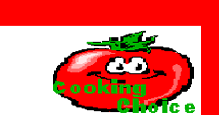|

|

|

|
The
cooking process known as broiling consists in
exposing food directly to the source of radiant heat (usually gas
burner or electric coil) and cooking it over or before a source of that
heat. Temperatures for broiling are higher than temperatures for
roasting; the broil indicator of a household range is typically set
around 550° F (288° C), whereas larger commercial appliances broil
between 700° and 1,000° F (371° and 538° C). Broiling differs
from roasting and baking in that the food is turned during the process so as to cook one side at a time.
The aim in broiling is to retain the juices of food and develop
flavor. As it is a quick method, foods that are not tender, as, for
example, tough meats, should not be broiled, because broiling does not
help to render their fibers more tender.
In applying this cooking
process, which is particularly suitable for tender portions of meat and
for young fowl, the food should be exposed to intense heat at first in
order to sear all surfaces quickly and thus retain the juices. At the
beginning of the cooking, the article that is being broiled should be
turned often; then, as soon as the outside is browned, the heat should
be reduced if possible, as with a gas stove, and the article allowed to
cook until done.
For proper broiling, you will need to preheat your broiling pan and move your oven rack to the highest possible
position in the oven, which is typically 3-4 inches from the broiler.
If the broiling is done over heat that is not reduced, it is necessary to
continue the turning during the entire process. Broiling produces
an especially good flavor in the foods to which it is applied, provided
they are not tough.
|
|
|

|

|
 |







